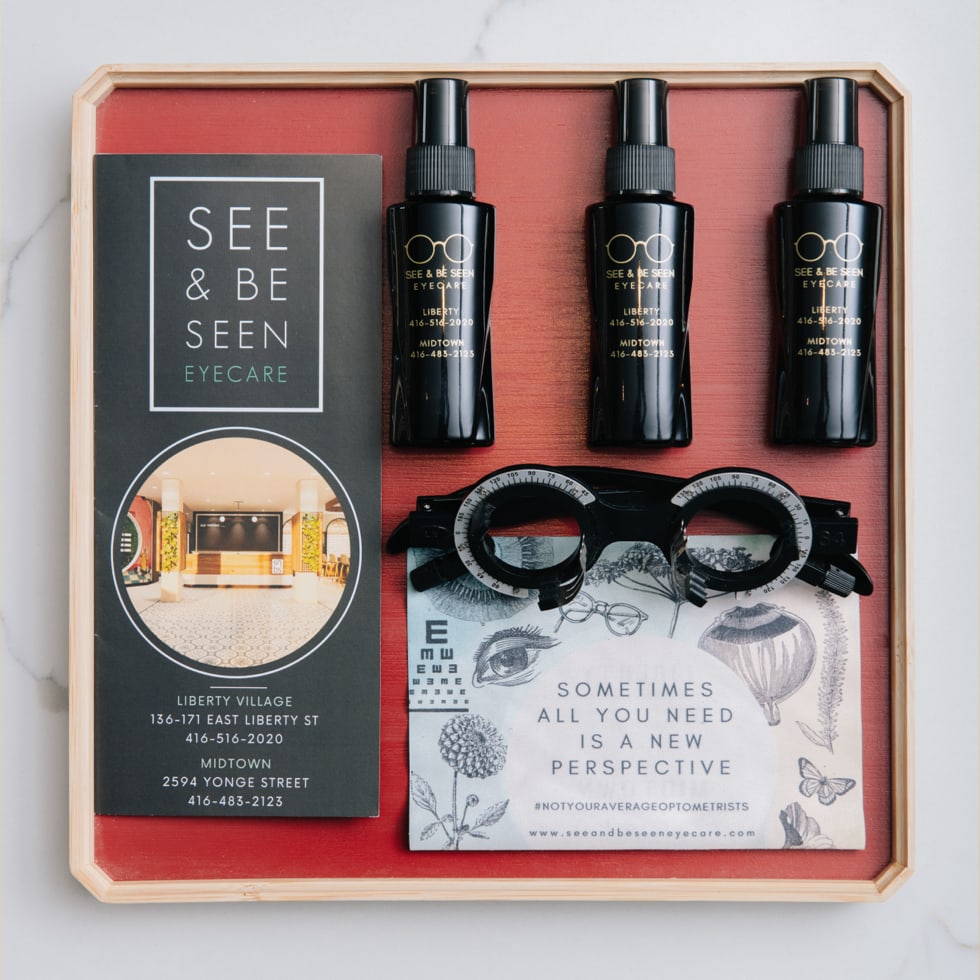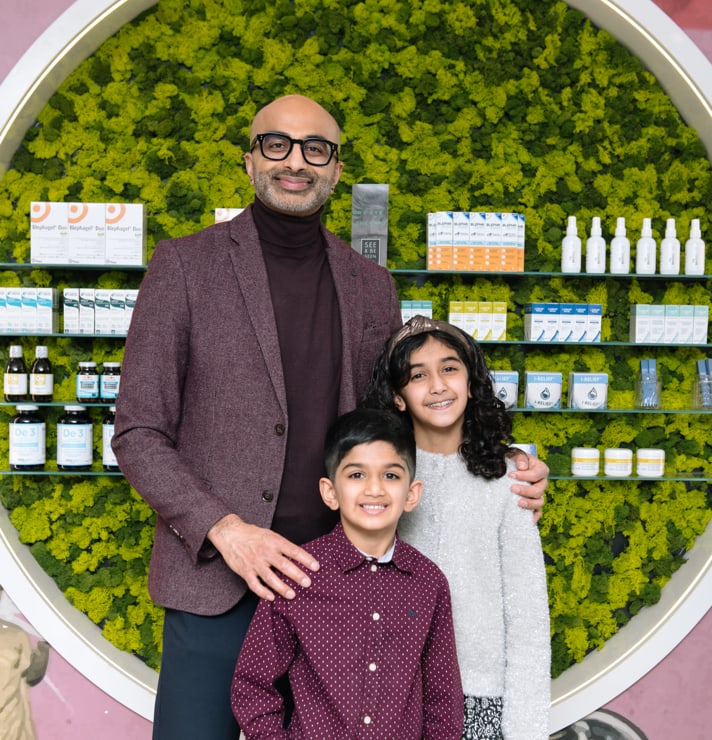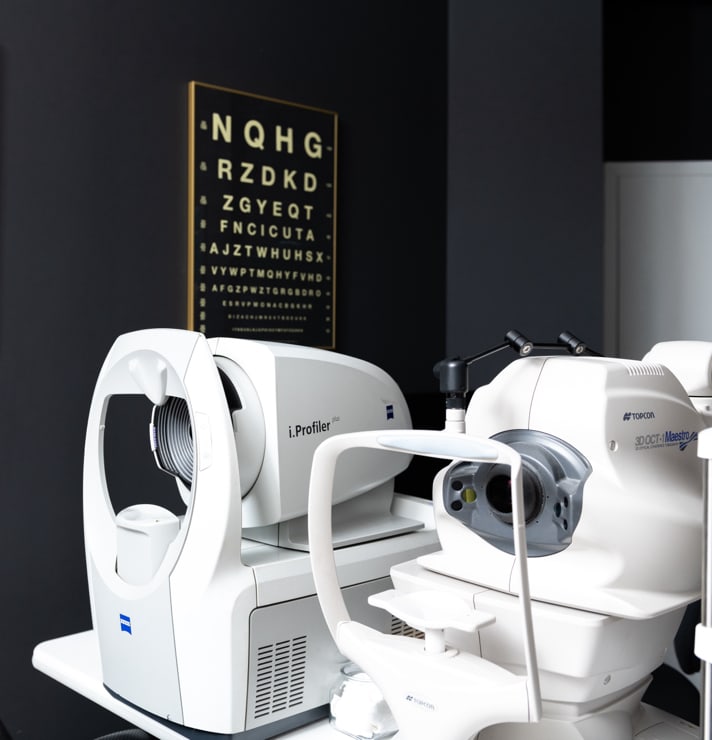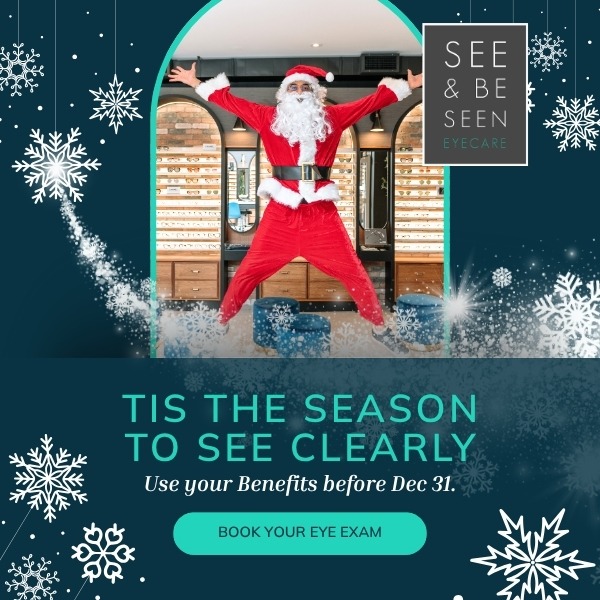The Ontario Health Insurance Plan (OHIP) provides coverage for a wide range of health services. However, understanding exactly what is covered can sometimes be confusing, especially when it comes to eye care.
Regular eye exams are essential not only for maintaining good vision but also for overall health. While eye exams are important from childhood to your golden years, there are some limitations to OHIP coverage.
OHIP covers many essential medical services, but there are specific guidelines on what is included. For eye care, OHIP coverage depends on age, medical conditions, and circumstances.
What Does OHIP Cover?
To be eligible for eye exam coverage, you must have a valid OHIP card and fall within the specified age groups or have a qualifying medical condition. You can always check with your eye doctor to confirm your eligibility.
Some of the specifics regarding OHIP coverage for different age groups and medical situations include:
Children 19 & Under
- Receive 1 eye exam (for vision and general eye health) every 12 months
- Any minor assessments needed
Adults Aged 20 to 64
- Only those with specific conditions are covered for annual eye exams
- Eligible for 2 additional follow-up minor assessments if specific conditions are met
Older Adults Aged 64 & Up
Older with eligible medical conditions, such as macular degeneration, glaucoma, and diabetes, are covered for:
- One eye exam every 12 months
- 2 minor follow-up assessment exams every 12 months following the annual eye exam
Older adults without eligible medical conditions are covered for:
- One eye exam every 18 months
- 2 minor follow-up assessment exams every 18 months following the annual eye exam
Additional Conditions Covered by OHIP
If you do not meet the criteria for a covered eye exam, you may be insured if you have the following:
- Uveitis, whether recurring or not
- Active cases of retinal eye disease
- Active cases of corneal disease
- Active cases of optic pathway disease
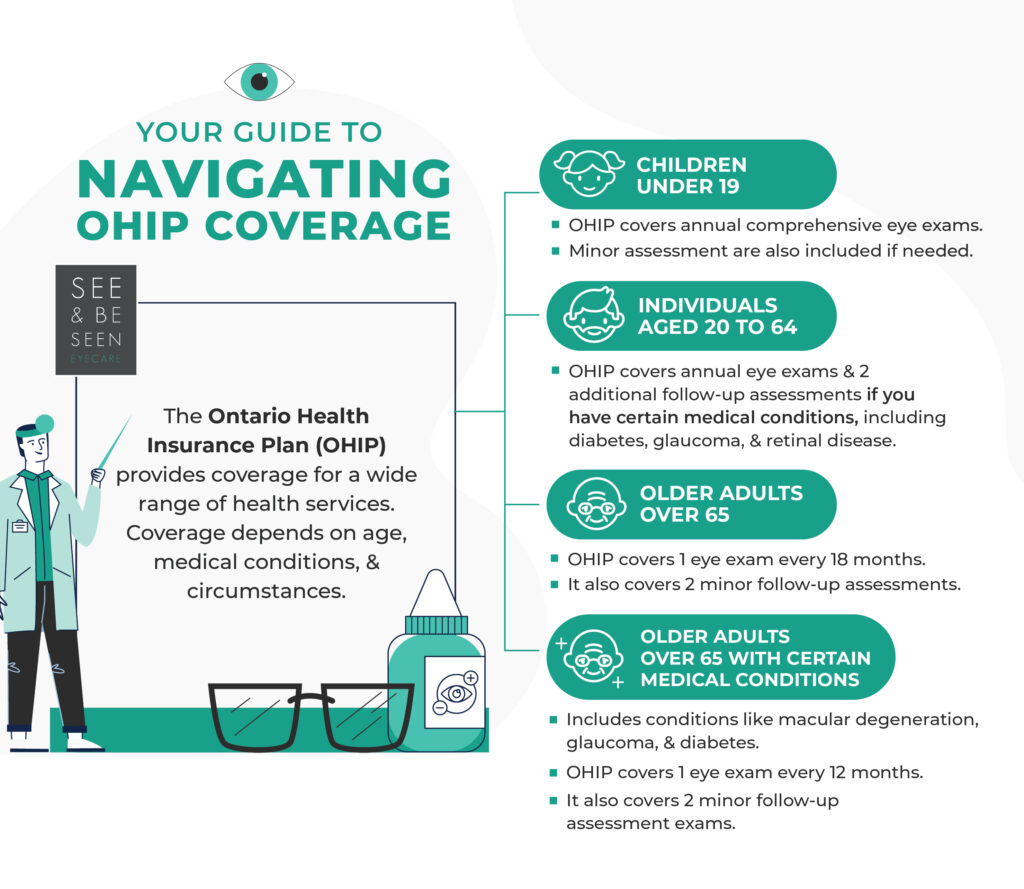
What Does OHIP Not Cover?
While OHIP provides a range of services, there are some exclusions, including:
- Prescription eyeglasses and contact lenses
- Laser eye surgery
- Dry eye treatments
- Extra testing, like retinal photography
- Contact lens fittings
Options for Those Not Covered by OHIP
If you do not qualify for OHIP coverage, there are still options available. Many employers offer extended health insurance plans that include eye care. Additionally, some community health centers and nonprofit organizations provide affordable eye care services.
Private Vision Coverage Options
There are a range of private health insurance plans that cater to eye care needs, encompassing services like eye exams, eyeglasses, and contact lenses. Some options include:
- Manulife
- Sun Life Financial
- Blue Cross
- Great-West Life
Government Aid for Eye Care
In addition to private plans, government initiatives extend support for eye care services. Programs such as the Ontario Disability Support Program (ODSP) and Ontario Works (OW) offer valuable assistance in covering expenses related to eye exams, eyeglasses, and crucial eye care services for qualifying individuals.
Why Do I Need an Eye Exam?
Eye exams serve multiple purposes beyond updating your vision prescription. They are comprehensive health evaluations to assess the overall health of your eyes.
Eye exams can reveal early signs of eye diseases like:
- Glaucoma
- Macular degeneration
- Cataracts
These conditions often develop without noticeable symptoms. Early detection through comprehensive eye exams allows for early intervention, which can prevent vision loss and improve treatment outcomes.
How Often Should I Get an Eye Exam?
How often you should get an eye exam depends on your age, eye health, and medical history. The Canadian Association of Optometrists offers the following guidelines for eye exam frequency:
- Children 19 and younger: Children should have a yearly eye exam until they reach the age of 19. Their eyes are still developing, and annual exams help address vision changes promptly.
- Adults from 19–64: Adults within this age range should have an eye exam at least every 2 years. Regular checkups can help monitor changes in vision and address any emerging issues.
- Older adults 65 and up: Older adults aged 65 should have an eye exam annually. As age increases, the risk of eye-related conditions also rises, making yearly exams essential for early detection and management.
Explore Your Options
Understanding OHIP coverage for eye exams is essential for maintaining good eye health without unexpected expenses. While OHIP covers eye exams for specific age groups and medical conditions, exploring other options is important if you are not eligible.
At See & Be Seen Eye Care, your eye health is our top priority. If you have questions about your coverage, give us a call or come talk to us before your next appointment. We are happy to walk you through your coverage and help you explore your options to help make sure your eye care needs are taken care of. Book an appointment with us today—let’s chat!








